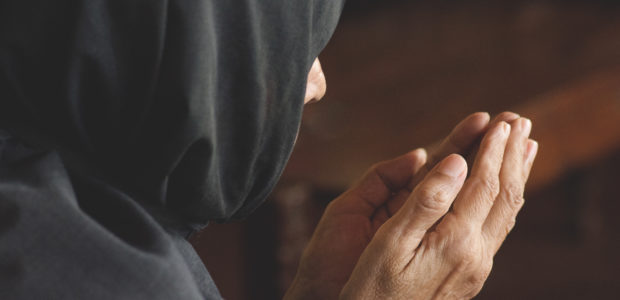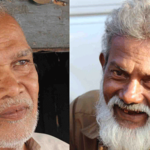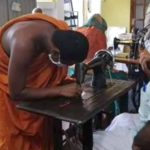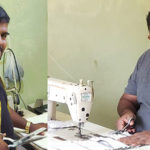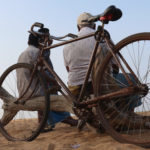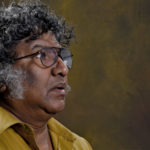The Hijab
Uncovering Female Agency in Sri Lanka
Shifani Reffai explores a feminist narrative surrounding the Hijab, in conversation with women in Colombo
Muslim clothing and the Islamic lifestyle have been under fire since the 2000s, what with media coverage of the US-Middle East occupations and consequent terrorist attacks in different countries. Despite there having been terrorist attacks by different groups since then, from the Buddhist monks of Myanmar to the ‘lone white shooters’ of the US – Muslims have been under special scrutiny. Like in any war, the women are those who have had to pay the greatest price, and Sri Lankans are no strangers to the phenomenon of conflict and racial profiling.
/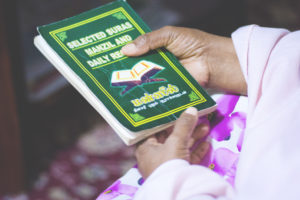
The hijab, a piece of cloth used to cover one’s head, has become more than just that for Sri Lankan Muslim women. The Easter attacks of April 21st turned the hijab into a political symbol, a target for racism. As much as there is truth to claims that the hijab has been used to oppress or to radicalize by some, it is also a chosen means of religious expression by thousands. It is also an item of women’s clothing that is commented upon by reporters and researchers that are often not women and not Muslim. And so we flip the narrative here, by talking with a varied group of Muslim women in Colombo, to present an insider’s look at what it really means to cover.
“We were free,” says Fareeda Yusoof Riffai (71), a former English teacher. “But after Easter, something had changed. We were all on high alert. I didn’t go out much and all the bayans (gatherings for Islamic lessons) were stopped.” Anyone who looked visibly Muslim was subject to suspicion, she added, but it was mostly the women who discovered the target on their backs. “It was painful to know what had happened to the Christians. Jesus was a Prophet to us too. This is not right and this is not Islamic,” she added.
/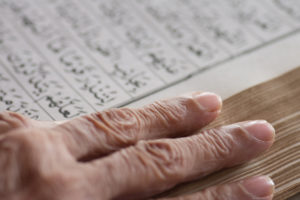
She recalls that in her youth, nobody covered their heads. Then, in the 1980s there was a religious revival – more people were gaining access to foreign countries on holiday and work, and with their returns from the Middle East, they brought back some of the books and clothes they had acquired there. Fareeda herself only started wearing the hijab fifteen years ago, because she had begun to read more and attend bayans. “We grew up dressing modestly, that was normal for all Sri Lankans, and I think, after the 80s and 90s we saw more women covering – Muslim women were beginning to educate themselves about the religion.”
Aamina Nizar (32), is a photographer who also draws links between acts of reading and covering. While women in the past have had to rely on patriarchal structures in their family for instruction on clothing and lifestyle, women today have access to religious knowledge in print media and online. “Growing up, I’ve seen girls here have to deal with restrictions on education, the freedom to go out, still relying on their fathers or gaining ‘freedom’ only after marriage.” She adds that while she and her friends covered their heads and actually got to study abroad, get degrees and jobs, and travel by themselves, her cousins who didn’t cover their heads were not allowed the same liberties. “I’ve seen this kind of systematic powerlessness in women, who cover and who don’t cover as well.” It’s not the clothing that does it, she seems to suggest – the roots of these practices go deeper.
/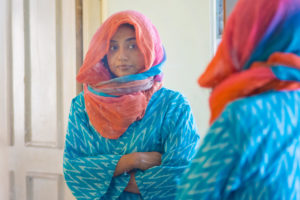
Aamina falls under a niche group of Muslim women, who cover their heads and openly practice Islam while also engaging with the world in a very vocal way, as a feminist. She is at the forefront of the Act to reform Islamic Marriage and Divorce laws of Sri Lanka, and also runs a YouTube channel that discusses Muslim and communal issues. “I cover myself because I don’t want to be objectified. You never hear of ‘modest men’s clothing’ because men’s clothing is modest by default – why is it not the case with women’s clothing? I started dressing this way as an act of worship, but it is also my way of refusing to fit in with a mainstream standard that sexualizes women.”
For Rizna Razak (48), is a mother of four and homemaker, covering has been all she has ever known. “I used to cover myself with a shawl when I was young, but I really started wearing the hijab and the abaya (a long cloak) when I got married at the advice of my in-laws. I educated myself and it made sense to cover. I’m glad I did.” She says that she feels safer in covered clothing, and that it earns her more “respect” from strangers in public spaces.
/
“The only place it has been awkward for me to cover, is when I have to go to my daughters’ schools, which only allow women to wear the saree.” Government schools in Sri Lanka have very strict rulings about the clothing of those who enter the building, especially for female visitors – sarees as a standard uniform are recommended, no short sleeves, no short skirts, but no covering of the head either.
Her daughters all wear the hijab and abaya, but since April 21st, they’ve made the move to change their clothing. Her daughter, 22, adds, “The black abaya is really convenient more than anything else – I don’t have to think about what to wear every day, it never looks dirty, I can throw it over whatever I’m wearing, I don’t have to think about matching clothes.” However the suspicion that the black abaya and the black face-cover received after Easter, led Rizna’s daughters to wearing coloured abayas instead. “We wore colourful ones, to separate ourselves from what had happened – we are not ‘them” explained Rizna’s daughter, “When we did this, some people began to confess to us that they never liked black abayas. I even got ridiculous comments like ‘Is it just extremist Muslims who wear black?’ You become interrogated like you’re mascot for the religion who has to answer for everybody… But mostly it’s been a good shift.” Rizna adds that fitting in as a Muslim in Sri Lanka was never a problem in the past, “We enjoyed the freedom to dress however we wanted all these centuries – but now because of terrorists, everything has changed.”
Mariam Hameed (name changed on request), a 29 year old interior designer, does not cover. “It’s funny because people call us Malays ‘the Burghers of the Muslim community’, as in we are very relaxed and casual and enjoy dance and music. This seems like a friendly observation, but also not being covered becomes associated with not religious, which isn’t always fair.” She goes on to add that, in her class during Ramadan, a few Muslim classmates in hijab asked her to try the hijab – so she did for a while, “but I felt exotic – I didn’t feel like myself.” The hijab, she says, is so personal to people – most of us pick and choose what we can honour in the religion. “I choose not to drink or smoke because of religion, but I choose not to cover. I don’t think it is a measure of how connected I am to God.”
/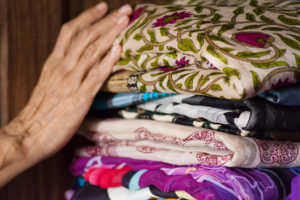
Despite not wearing the hijab, Mariam who has friends and family who cover, has strong opinions on the act. “People should wear it when they’re ready. And I do believe that the external act of covering should inspire an internal change. It’s not a superficial thing.”
These five women may at first seem like they have nothing in common, but that they are irrevocably drawn together, post-Easter, by their racial and religious circumstance, which leaves them at a strange crossroads. What has perhaps changed for this group over the years, is choice; the power to explore and exert it, and to be heard today, is greater than it has ever been before, especially with the advent of technology and social media. How this choice will be exercised – whether at home, in public, in response to the government, in response to people inside the community or outside it – is something that is being engaged with, by Sri Lankan Muslim women everywhere, since April 21st. When asked what this might mean in the next few years, Aamina asserts, “The Sri Lankan Muslim woman of the future is going to be under a lot of scrutiny. More than the men among us, she is going to be seen as the flagbearer for the entire community.”
